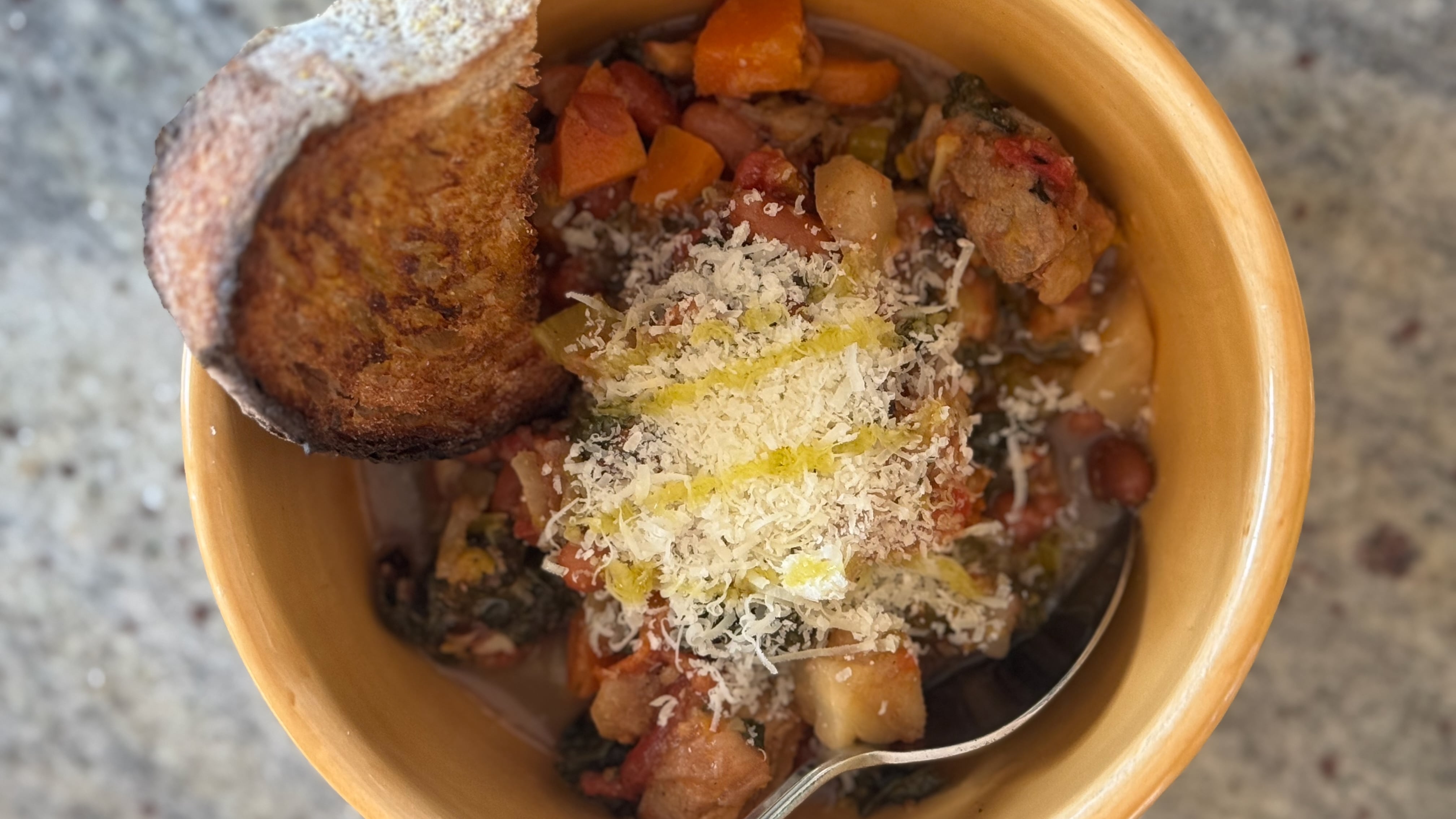Jim Dixon wrote about food for WW for more than 20 years, but these days most of his time is spent at his olive oil-focused specialty food business Wellspent Market. Jim’s always loved to eat, and he encourages his customers to cook by sending them recipes every week through his newsletter. We’re happy to have him back creating some special dishes just for WW readers.
Minestrone translates literally to “big soup,” so it’s only natural to cook up a big pot. And even if you don’t have to feed a crowd, you can always freeze some for later. Like all Italian food, minestrone varies significantly depending on geography. Along the Ligurian coast it might include lettuce and pesto, while the Piedmontese make their version with artichokes. It’s usually vegetarian; minestrone is the epitome of cucina povere, the food of the poor, and while my almost-Tuscan version calls for some pork, you can leave it out and the thick vegetable stew will still be delicious.
While I usually cook beans in the oven, for soup I like to use a bit more water on the stovetop so I get plenty of tasty bean broth. I cook the rest of the soup in another pot so I can take advantage of the Italian concept of insaporire. There’s really no English equivalent, but Marcella Hazan wrote that it means “making tasty,” and it boils down to cooking the vegetables in a certain order to bring out the most flavor.
The process starts by adding the mix of onion, celery and carrot—what the Italians call soffrito—to the browned meat (or olive oil if going vegetarian) and letting them cook until soft. Then the rest of the vegetables are added and allowed to simmer to produce, as Hazan wrote, “a soup of dense, mellow flavor that recalls no vegetable in particular, but all of them at once.” And there are lots of vegetables, so this ends up being a big pot of soup. Have the neighbors over for dinner or stash the leftovers in the freezer for another night.
Minestrone for a Crowd
- 2 pounds pork shoulder, optional
- 1 tablespoon extra virgin olive oil
- 1 onion, chopped
- 2 celery stalks, chopped
- 2 carrots, chopped
- 3 garlic cloves, chopped
- 1 celeriac, peeled and cut into bite-sized pieces
- ½ head green cabbage, cut into bite-sized pieces
- 1 bunch Italian kale, cut into bite-sized pieces
- 1 28-ounce can of crushed tomatoes
- Chunk of Parmigiano rind, optional
- ½ pound pinto, cranberry or borlotti beans
- Kosher-style sea salt
- Black pepper
- Fresh sage, optional
- Grated Parmigiano Reggiano for serving, optional
Put the beans in a pot with a lid, add about 4 cups of water, a pinch of salt and any fat (finely chopped) trimmed from the shoulder. Bring to a boil, reduce heat and simmer until very tender, which should take about 2 hours.
Cut the pork into roughly bite-sized pieces. If you want to trim any fat, add it to the beans while they cook instead of tossing it. Heat a large Dutch oven or stock pot over medium high, add the oil and pork, and cook it undisturbed until nicely browned. Turn the meat over and brown the other side.
If not using meat, heat a few tablespoons of olive oil in the Dutch oven. Stir in the onion, celery and carrot. Cook for about 10 minutes, then add the celeriac, cabbage, kale, tomatoes, a good pinch of salt, the black pepper and sage. If you’ve got a rind of Parmigiano, toss it in. Add enough water to almost, but not quite, cover everything in the pot. Bring to a boil, then cover, reduce heat, and simmer until the vegetables are very tender, about an hour. Turn off the burner and let it sit until the beans are done.
When the beans are ready, pick out any of the pork fat and chop it finely, then add it to the vegetables along with the beans and any liquid (or add the vegetables to the bean pot if that’s easier). Bring the pot back to gentle boil and simmer, covered, for at least 30 minutes longer. Taste and add salt as needed. Serve with the grated cheese, a drizzle of extra virgin olive oil, and a piece of crusty bread.

